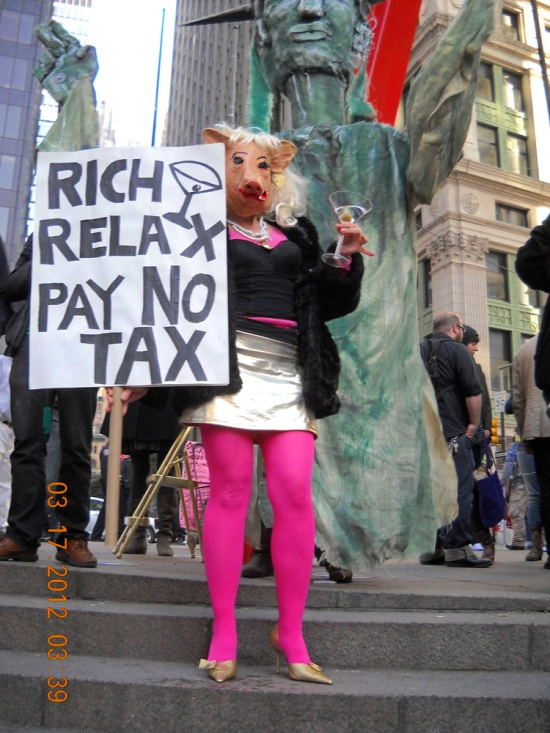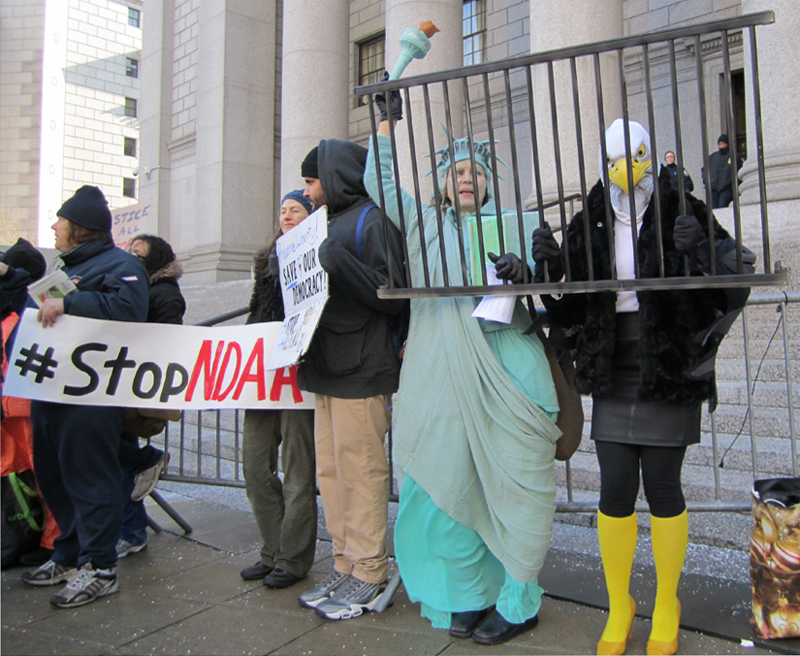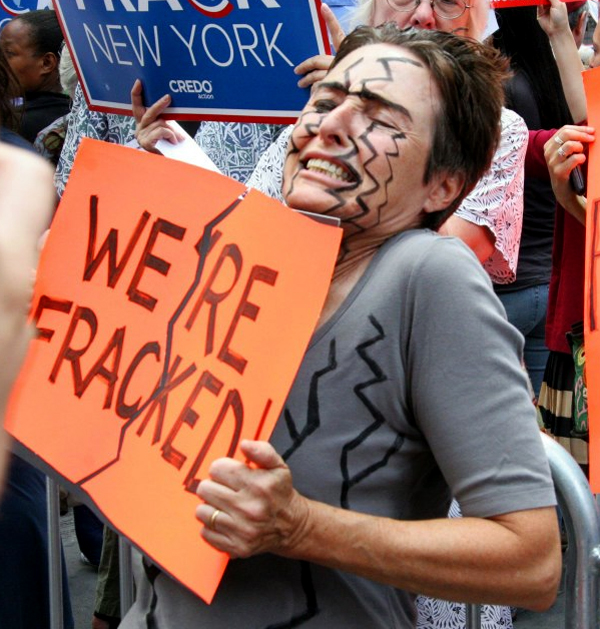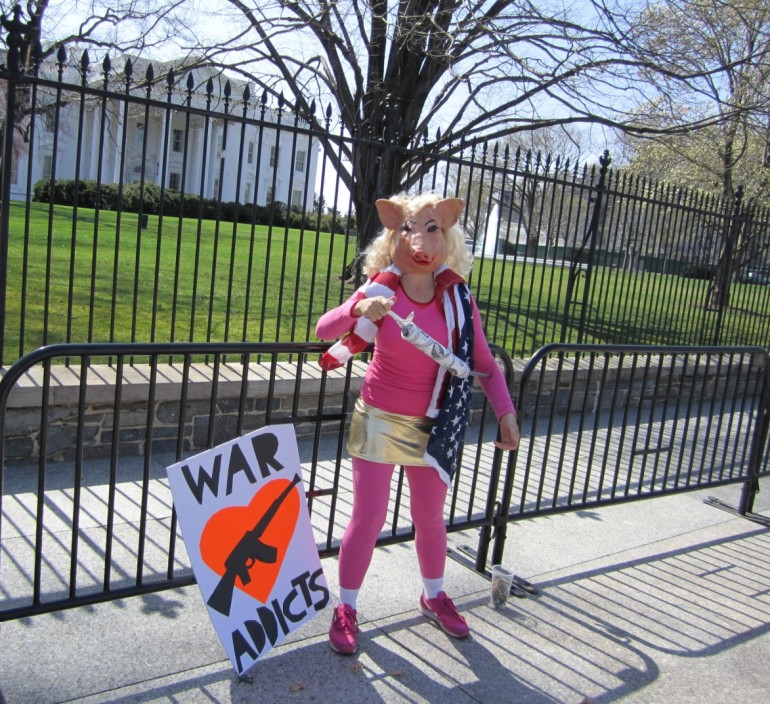Brooke McGowen is the founder of Radical Art Initiative.
Eleni Papaioannou interviewed her as part of her research project at the London Contemporary Dance School about the use of art for social change.
Why did you choose to become involved with art activism? Did something motivate or inspire you?
Although I am an American (born in Chicago), I lived most of my life as an artist in Europe. In 2008 I moved to New York. Upon returning, I was shocked to see the condition of my home country: poverty, the corrosion of the middle class, the usurpation of power by banks and corporations. The endless wars and militarization of society reminded me of the last days of the Roman Empire. This social reality was impossible to ignore. Art was a means of dealing with it.
Another aspect of American life that upset me was the widespread environmental destruction, from fracking to tar sands to mountain top removal. Luckily recently increasing numbers of people are demanding corporate responsibility to keep our country and the planet inhabitable for future generations.
Working with various activists groups such as World Can’t Wait or 350.org inspired me to use art as a means of raising awareness. Art can illustrate and personify the truth. That’s how art can change people’s thinking.
What do you intend to achieve through your work?
I would like to draw attention to major problems that people are not aware of. These are things that affect them directly and they have the right to be informed.

My first action in 2009 was to create the Piggy Rich persona which I used to protest the greed on Wall Street. My friend played the figure ‘Merica, chained by economic inequity. We performed this action quite often on Wall St. and continued this performance with the OWS movement during the fall of 2011.

Another alter-ego is Haley Eidus. This is the latin name (Haliaeetus) for the American eagle. This persona was first used to protest the NDAA and indefinite detention and later used to inform about Citizen’s United, the Supreme Court’s 2010 decision to grant corporations the same rights as people.

Environmental destruction was also the subject of some actions. Here an anti-fracking rally in Manhattan.

The Draw-the-Line event sponsored by 350.org, an environmental organization concerned with carbon emissions and global warming gave us the opportunity to draw the future high water line around Lower Manhattan on Sept. 21. 2013.

One recent persona is Mona Santo. This zombie-like apparition dragging a huge ear of corn is effective in drawing attention to the contamination of our corn through GMOs.

These performances create a visual personification of the issue, using a humorous approach to appeal to people and catch their interest.
To what extent do you believe that your work has an effect on the contemporary world? To whom and what kind of effect?
It can be a direct effect, like when people find out about GMOs seeing my performance, or a long-term effect when photos of the actions are propagated on social media. I also hope to encourage other artists to use their art to point out areas of society in need of change.
There is a long history of using symbols and characters in political protests. Shortly before the American revolution was ignited, many patriot protests involved the use of effigies and street theater mocking the English authorities. This was an important catalyst to liberate people’s thinking from authority figures and allow them to imagine a different society.
In your opinion, what does it mean for art to be useful nowadays?
The question is useful for whom? The art scene as a playground for the wealthy is an especially decadent aspect of America’s decline. I think art has more purpose than just entertainment. It has a social responsibility to be an uncorrupted voice, giving the truth a form everyone can understand.
Do you think art is powerful? In which sense?
Visual art is an instantaneous medium, conveying its message in a split second. This makes visual art the most powerful medium. That is why visual media have been co-opted by commercial interests, ads invading your field of vision everywhere. This is also the reason graffiti and street artists face severe jail sentences. The corporate right to control our visual space is defended by our own police. No one asked us if we want to see the ads. I for one would rather see graffiti, a form of self-expression not determined by monetary interest. It has more truth in it than any ad.
How do you think art functions within an economic system?
The special thing about real art is that it is independent of the economic system. That makes art predestined to represent an objective view. That is the true value of art, not some fantasy market value. The value of art is the contribution it makes to understanding reality. To fulfill this function it cannot be compromised by ideologies or special interests. The only interest real art serves is the interest of life itself.
To what extent and how do you think capitalism and the ‘rules’ of cultural production affect your work and art in general?
The art market in capitalism is a huge money-laundering business where the wealthy speculate in easily-manipulated markets. This pernicious theater has gone crazy creating overblown objects that only a wealthy collector can store. This has nothing to do with art, it’s just the next bubble.
For me, real cultural production is the result of the artist’s interaction with social reality. Real art is the communication of emotional information that is meaningful to people in general and not just a commodity for a few wealthy collectors.
Real art cannot serve capitalist interests. It is a revolutionary medium that is helping us create a better future.






